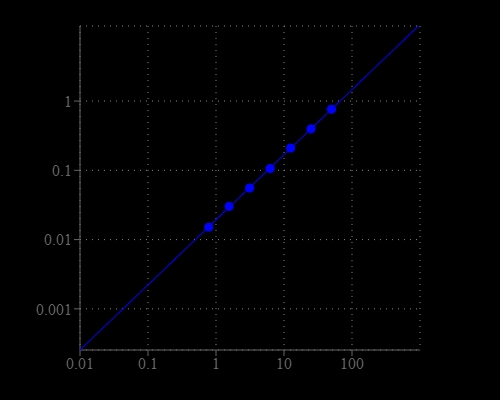Amplite® Colorimetric Hydrogen Peroxide Assay Kit
Hydrogen peroxide (H2O2) is a reactive oxygen metabolic by-product that serves as a key regulator for a number of oxidative stress-related states. It is involved in a number of biological events that have been linked to asthma, atherosclerosis, diabetic vasculopathy, osteoporosis, a number of neurodegenerative diseases and Down's syndrome. Perhaps the most intriguing aspect of H2O2 biology is the recent report that antibodies have the capacity to convert molecular oxygen into hydrogen peroxide to contribute to the normal recognition and destruction processes of the immune system. Measurement of this reactive species will help to determine how oxidative stress modulates varied intracellular pathways. This Amplite® Colorimetric Hydrogen Peroxide Assay Kit uses our unique Amplite® IR peroxidase substrate to quantify hydrogen peroxide in solutions and cell extracts. Upon hydrogen peroxide oxidation the colorless Amplite® IR generates an intense blue color product that is pH-independent from pH 4 to 10. The existing colorimetric hydrogen peroxide assays (from other vendors) often have severe sample interferences caused by the inherent absorption of biological samples. The near infrared absorption of Amplite® IR product minimizes the assay background that since the biological samples rarely absorb light beyond 600 nm. It can also be used to detect a variety of oxidase activities through enzyme-coupled reactions. The kit is an optimized 'mix and read' assay that is compatible with HTS liquid handling instruments.


| Catalog | Size | Price | Quantity |
|---|---|---|---|
| 11500 | 500 Tests | Price |
Storage, safety and handling
| H-phrase | H303, H313, H333 |
| Hazard symbol | XN |
| Intended use | Research Use Only (RUO) |
| R-phrase | R20, R21, R22 |
| UNSPSC | 12171501 |
Instrument settings
| Absorbance microplate reader | |
| Absorbance | 650 nm |
| Recommended plate | Clear bottom |
Documents
Contact us
| Telephone | |
| Fax | |
| sales@aatbio.com | |
| International | See distributors |
| Bulk request | Inquire |
| Custom size | Inquire |
| Technical Support | Contact us |
| Request quotation | Request |
| Purchase order | Send to sales@aatbio.com |
| Shipping | Standard overnight for United States, inquire for international |
Page updated on December 28, 2025
